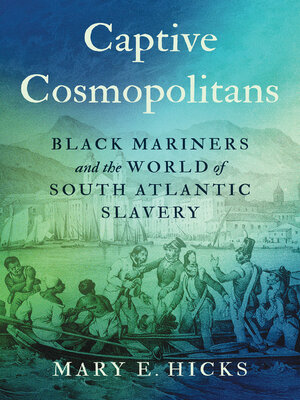Captive Cosmopolitans
ebook ∣ Black Mariners and the World of South Atlantic Slavery · Omohundro Institute of Early American History and Culture and the University of North Carolina Press
By Mary E. Hicks

Sign up to save your library
With an OverDrive account, you can save your favorite libraries for at-a-glance information about availability. Find out more about OverDrive accounts.
Find this title in Libby, the library reading app by OverDrive.



Search for a digital library with this title
Title found at these libraries:
| Library Name | Distance |
|---|---|
| Loading... |
From the bustling ports of Lisbon to the coastal inlets of the Bight of Benin to the vibrant waterways of Bahia, Black mariners were integral to every space of the commercial South Atlantic. Navigating this kaleidoscopic world required a remarkable cosmopolitanism—the chameleonlike ability to adapt to new surroundings by developing sophisticated medicinal, linguistic, and navigational knowledge. Mary E. Hicks shows how Portuguese slaving ship captains harnessed and exploited this hybridity to expand their own traffic in human bondage. At the same time, she reveals how enslaved and free Black mariners capitalized on their shipboard positions and cosmopolitan expertise to participate in small-scale commodity trading on the very coasts where they themselves had been traded as commodities, reshaping societies and cultures on both sides of the Atlantic. Indeed, as Hicks argues, the Bahian slave trade was ruthlessly effective because its uniquely decentralized structure so effectively incorporated the desires and financial strategies of the very people enslaved by it. Yet taking advantage of such fraught economic opportunities ultimately enabled many enslaved Black mariners to purchase their freedom. And, in some cases, they became independent transatlantic slave traders themselves.
Hicks thus explores the central paradox that defined the lives of the captive cosmopolitans and, in doing so, reveals a new history of South Atlantic slavery centered on subaltern commercial and cultural exchange.
Hicks thus explores the central paradox that defined the lives of the captive cosmopolitans and, in doing so, reveals a new history of South Atlantic slavery centered on subaltern commercial and cultural exchange.







